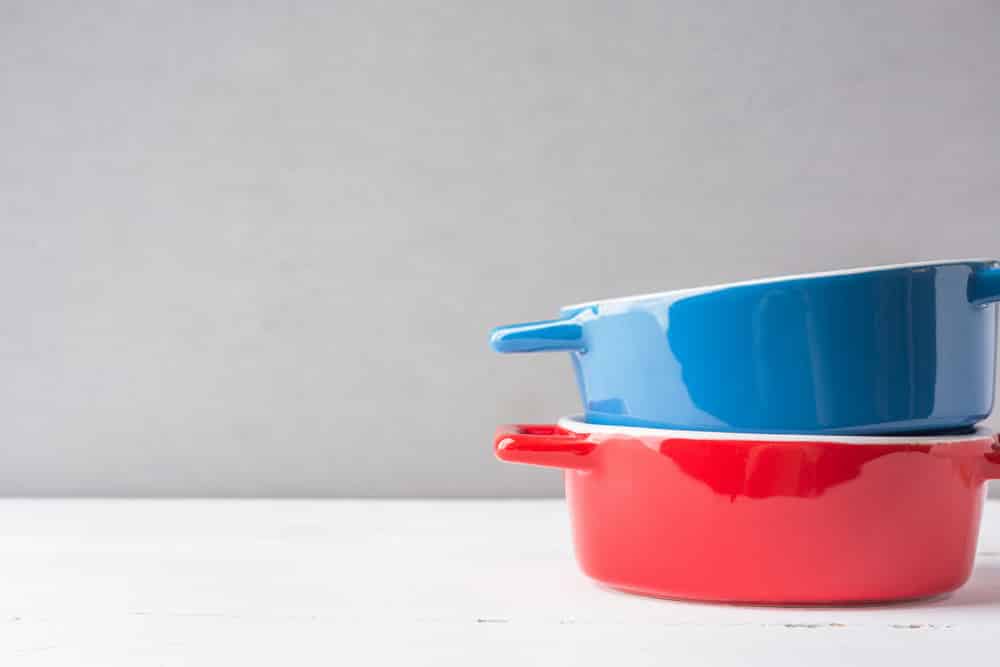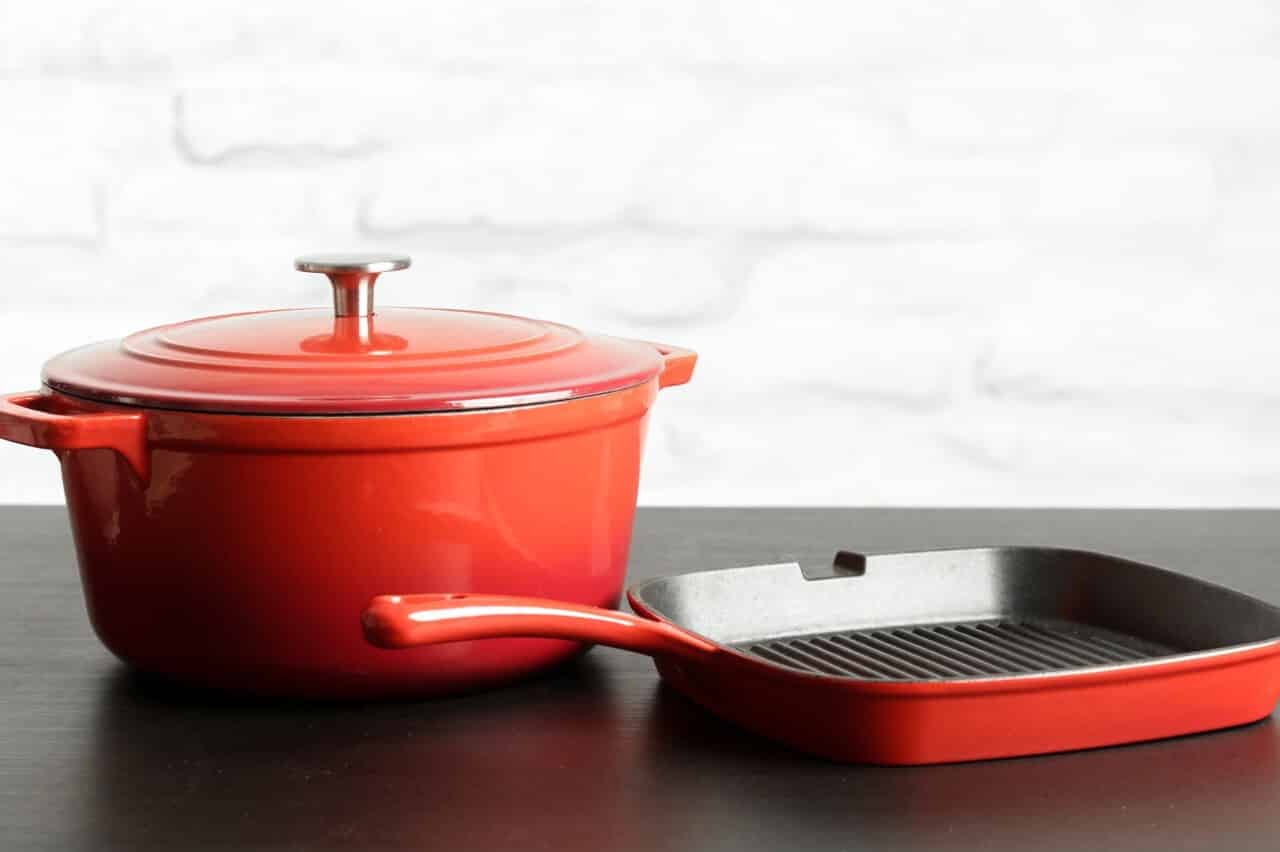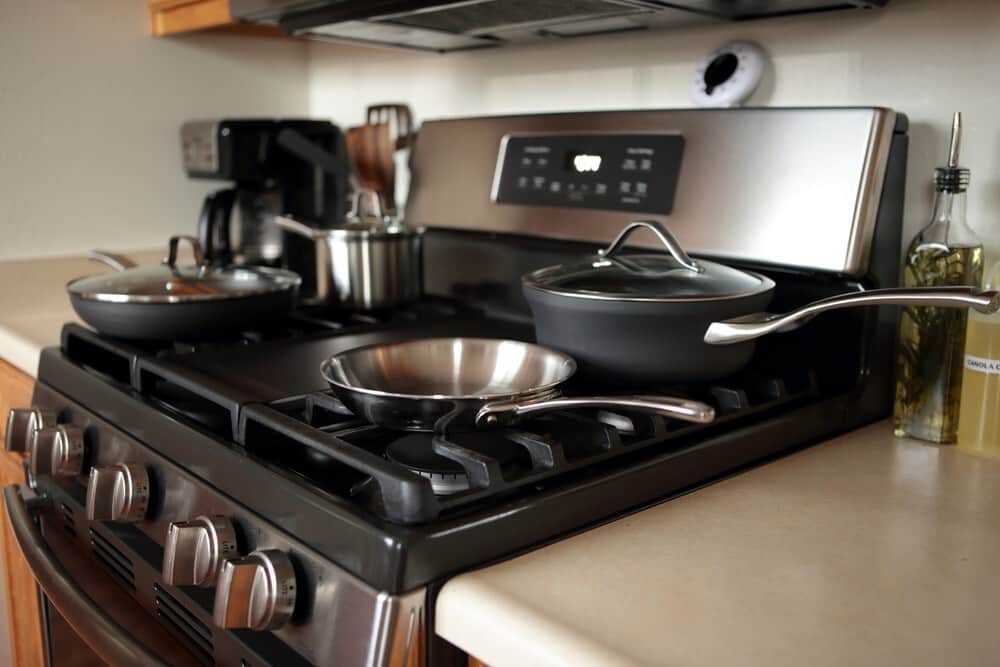There are two different types of nonstick cookware – hard-anodized and ceramic. What’s the difference? Read on to learn more about each type of cookware, its pros and cons, and the best use cases for each option. Cookware pots are made from either hard anodized or ceramic material to provide a non-stick cooking surface. The names describe the process used to create these materials – hard anodized is created through a process involving aluminum oxide, while ceramic is made by mixing glass powder together with various binders.
How hard anodized and Ceramic cookware differ

1. Materials: hard anodized cookware is made with aluminum oxide, while ceramic cookware is often comprised of glass powder mixed with other binders.
Each material offers different benefits and drawbacks. Aluminum oxide is also durable, scratch-resistant, and non-toxic. Unfortunately it is also more expensive than most other cookware materials. Glass material is inexpensive but is less durable and often contains chemicals that leach into food. Another big difference is that aluminum oxide will not vary in thickness or density no matter how hot it gets, making for a perfectly consistent cooking surface after being anodized. Ceramic coatings are not as consistent – the material can become slightly thicker or thinner after being heated to different temperatures, leading to “hot spots” on ceramic cookware that may burn food.
2. Product lifespan: hard anodized cookware happens to be more durable than ceramic cookware.
Hard anodized cookware is more durable than ceramic cookware. Ceramic materials will chip or crack when dropped or banged around, while hard anodized cookware will sustain the same amount of damage.
3. Chipping, scratching and corrosion: Hard anodized is more duarble
Hard anodized cookware has no imperfections because it is created through a process called “plating.” When aluminum oxide is laid on top of metal, it creates a highly-polished layer that’s resistant to chipping and scratching.
Ceramic materials are also resistant to chipping, but they can be scratched by regular metal tools used in cooking, such as knives and forks.
4. Cooking performance: Ceramic conducts heat better
Ceramic materials are more heat-conducting than hard anodized materials, leading to faster cooking time without overcooking meals.
5. Care: Ceramic is more durable, but they’re also more difficult to clean
Hard anodized cookware requires cleaning with a non-scratch scrubber before use, but it is easy to keep clean between uses. Ceramic cookware can be difficult to keep clean due to food residue sticking to the surface, which can also lead to food burn flavors.
6. Heat transfer: Hard anodized is better at retaining heat
Hard anodized cookware is harder to overheat, meaning food cooked on hard anodized cookware won’t burn as quickly as food cooked on non-stick surfaces.
7. Non-stick performance: Ceramic material provides more even heat conduction, but it’s slow to release heat

Ceramic cookware can be difficult to clean because food residue can be hard to remove from the surface. Higher-quality ceramic materials retain heat better, but they also have a slower rate of heating food up. Both materials are durable, but which is best for you depends on how you use your nonstick cookware and family cooking preferences.
8. Oven safety: Hard anodized has some resistance to high heat
Hard anodized cookware can handle the high heat of an oven, but make sure your cookware isn’t too scratched or it will discolor. Ceramic may also be used in the oven
hard anodized vs ceramic Verdict
The main advantage of ceramic is that it’s quicker to heat up, meaning food cooks faster. The main advantage of hard anodized is that is keeps food from burning.
Hard anodized cookware can be used on the stovetop and in the oven, but it isn’t really ideal for either so let’s weigh the pros and cons for each use case separately.
Ceramic cookware would be great for any cooking method where you want to reduce heat loss through conductivity, such as sous-vide cooking or low-heat stir-fry recipes. They would also be useful for baking dishes that need to retain heat during the cooking process, such as baked potatoes or whole casseroles.
Is hard anodized cookware safe?
Hard anodized cookware is dishwasher and microwave-safe, and can be safely cleaned with a non-scratch sponge.
Which is better hard anodized or nonstick?
Hard anodized cookware provides a stronger cooking surface, and has no performance issues when used in the oven. Nonstick cookware is durable and easy to clean, and will also work well with slow-cooking recipes that need to retain heat during cooking.
Which is better hard anodized or ceramic?
Hard anodized cookware provides stronger, more durable cooking surfaces than ceramic materials. They’re also dishwasher and microwave-safe, making them ideal for clean-up after use. Ceramic cookware can be scratched by metal utensils used in cooking, so it’s best not to use it in the oven or on the stovetop.
Is anodized ceramic safe?
Anodized (hard) ceramic is safe because it’s made with aluminum oxide, which is non-toxic and free of heavy metals.
Is hard anodized cookware best?
The best ceramic cookware is the one that suits your cooking needs. Hard anodized cookware is better for slow-cooking recipes, while ceramic cookware works well with faster-cooking recipes that require faster heating. Hard anodized has a stronger cooking surface, but ceramic materials are more scratch-resistant and conduct heat better.













